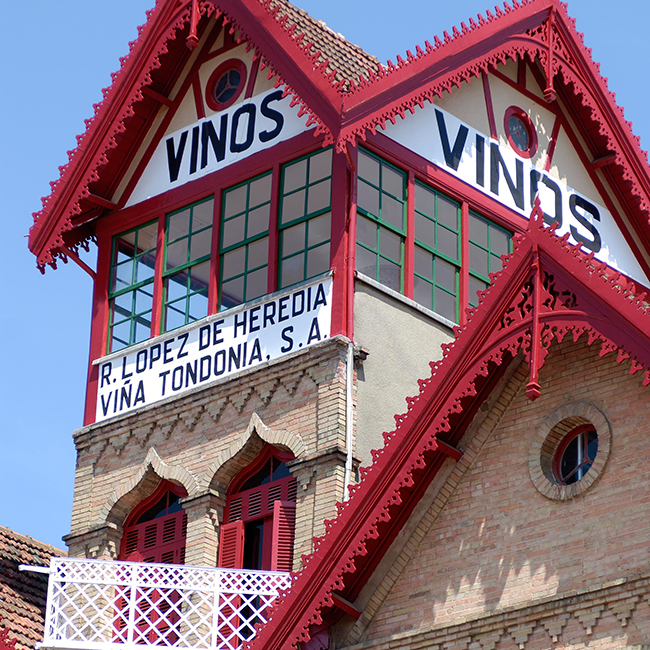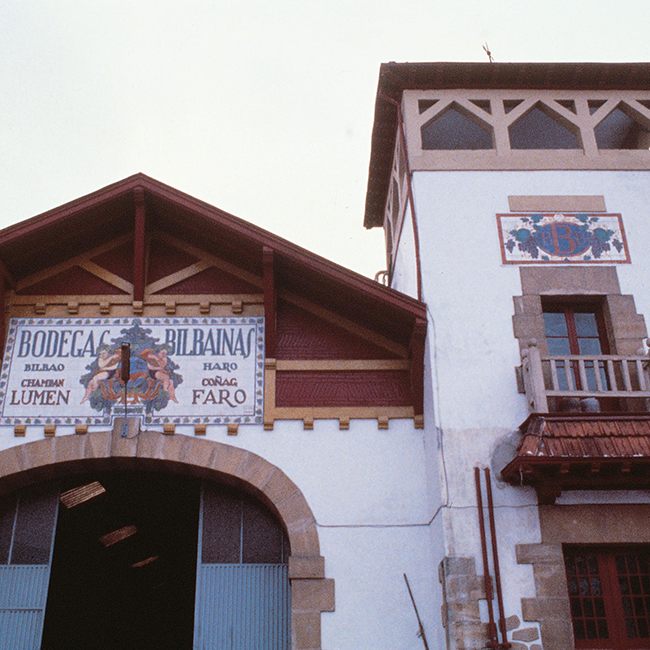.png.transform/rendition-xs/image_image%20(1).png)
Haro’s Station District: Exporting Rioja Wines for More than a Century
The first indication of the railway buzzing through the town of Haro (La Rioja) was just one in a series of events that transpired more than 100 years ago to turn the town’s Barrio de la Estación into one of the most emblematic wine-producing districts in all of Spain—something that still holds true today.

Located in the northwestern corner of La Rioja along the Ebro River, which forms a natural border with the Basque Country, the town of Haro has long been synonymous with this region’s internationally celebrated wines. This claim to fame stems in part from the prestige of the wineries found here, as well as the fact that Haro is home to nearly half of the vineyards that go into Quality Denomination of Origin Rioja wines.
Today this picturesque town is also popular for its Haro Wine Festival, a summer tradition that began in the 13th century, coinciding with the Día de San Pedro (Saint Peter’s Day), which has included an annual “wine fight” since 1965.
In more recent years, Haro has also hosted the now-annual La Cata del Barrio de la Estación, or the Haro Station Wine Experience, an important wine-world event that is put on by the seven iconic bodegas that are located in the historic area located around the town’s train station. They are: Viña Pomal Bodegas Bilbaínas, Compañia Vinícola del Norte de España – CVNE, Bodegas Gómez Cruzado, López de Heredia Viña Tondonia, Bodegas Muga, La Rioja Alta S.A. and Bodegas RODA. This Rioja wine extravaganza features a range of different tasting opportunities for both global wine professionals and casual Rioja wine lovers, as well as tapas tastings, live music, gastronomy and much more.
And while this important event has thrust the Barrio de la Estación, or Station District, back into the international limelight, it is important to remember that this area has played a key role the export of Rioja wines since as early as the mid-19th century.
19th-century origins

After the decimation of European vineyards by the phylloxera plague in the mid-1860s, many French wine makers ventured south to the still-unscathed vineyards of Rioja to buy both bottled and bulk wines (the plague would hit much later here), while also sharing the French’s wine-making and barrel-aging techniques. This period coincided with the inauguration of the Tudela-Bilbao railway in 1863, which passed through the town of Haro and signified new methods of transportation for both grapes and wine that would quickly replace the traditional horse and cart.
These factors helped give rise to the Barrio de la Estación, a neighborhood located in close proximity to the station that largely grew out of warehouses used for storing the goods that would be exported from Haro by rail. The first of these buildings to be used for actual wine production was built by French wine importers in 1877 with the help of Rafael López de Heredia. Thus he became the founder of the first of the aforementioned Spanish wineries to stake a claim in this area as it embarked on the start of “the golden age of wine trading (which lasted) from 1877 to 1892, when Spanish wines in France benefited from customs protection” (http://www.gomezcruzado.com/barrio-de-la-estacion/en).
The next Spanish winery to put down roots here was Compañia Vinícola del Norte de España, commonly known as CVNE, in 1879. Bodegas Gómez Cruzado followed in 1886, Bodegas La Rioja Alta S.A, in 1890 and Bodegas Bilbaínas in 1901. These were of course not the only Rioja wineries to set up shop in Haro, but they were and continue to be the stalwarts of the town’s
Station District.
The implementation of French oak-aging techniques, as well as the growth in fine wine production, led to the establishment of cooperages (barrel makers) in Haro not long after, as well as the Regional Wine Exhibition of Haro (1884), the La Rioja Wine Exporters Association (1907), the Rioja Wine Growers Association (1912), and the brand Rioja wine (1926). Indeed, by the dawn of the 20th century, it was clear that Rioja wine makers were fully committed to making quality wines in the Barrio de la Estación district of Haro.
To drive this point home even further, Bodegas Muga (which was founded in a different area of Haro in 1932) moved to the Station District in 1970, followed nearly twenty years later by Bodegas Roda in 1987—the last of the seven wineries that comprise this area today.
Inhabited by some of the most prestigious and acclaimed wineries in Spain—the majority of which have been here for well over a century—Haro’s Barrio de la Estación continues to be a symbol of quality Rioja wine, just as the name Haro is synonymous with what is undoubtedly this region’s most famous product all over the world.

